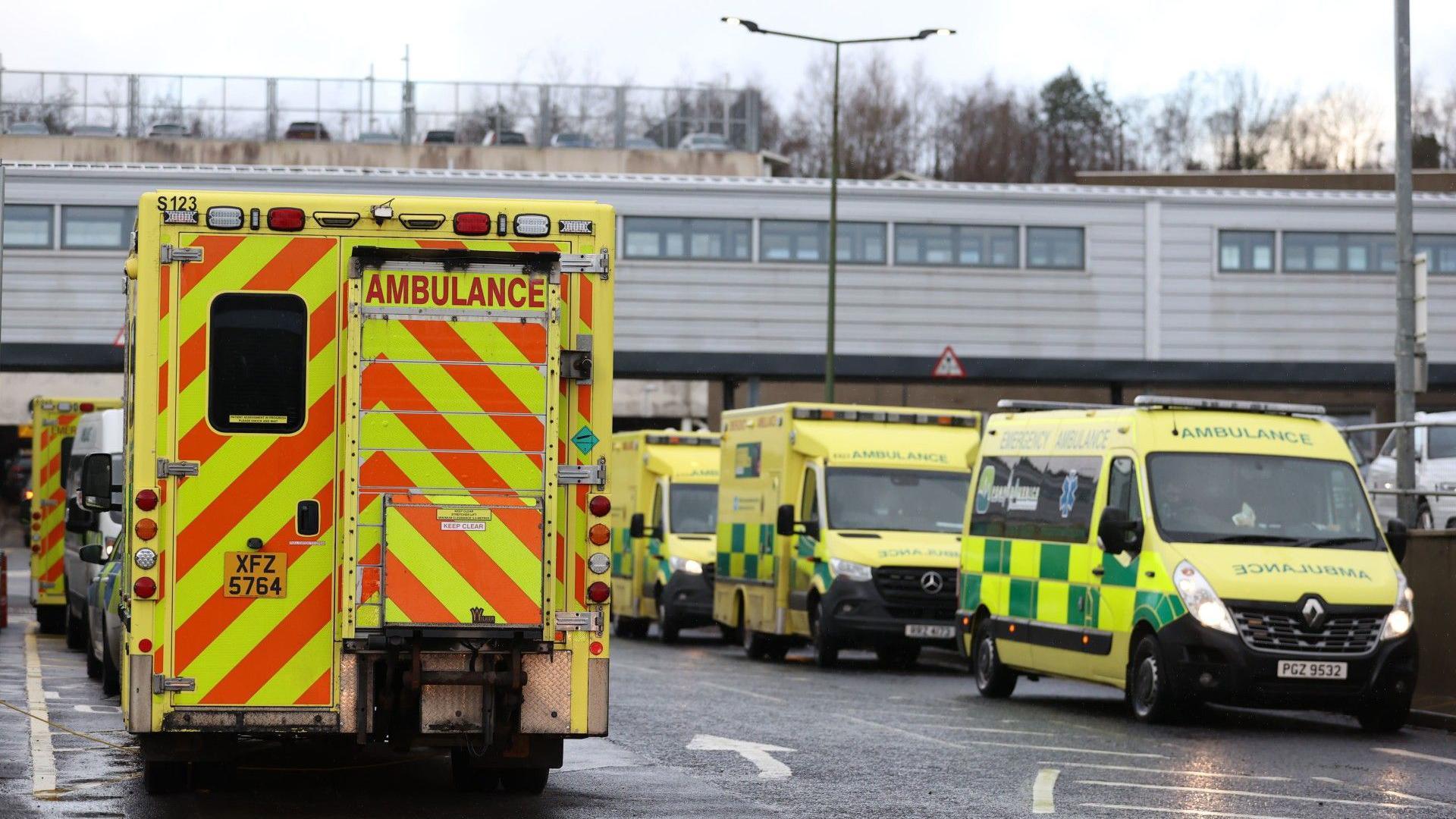Cutting ambulance waits among plans to tackle winter pressures

The new plan aims to reduce maximum ambulance waits outside emergency departments
- Published
A target to reduce maximum ambulance waits outside emergency departments from four hours to two hours by 1 December has been announced as part of a plan to tackle winter healthcare pressures.
There had been criticism from health workers and doctors' unions over a lack of consultation from the Department of Health on the plan.
Health Minister Mike Nesbitt announced a series of measures which he said are aimed at protecting health and social care services over the challenging winter period.
They include simplifying vaccination programmes, promoting community pharmacy services and additional resources for GPs and GP out-of-hours services.
GPs are set to get 10,000 medical care plans for their patients who are in nursing and residential care homes.
The plan identified seven areas for improvement but said the main focus is on "reducing hospital demand by supporting older people to stay well and receive appropriate care in the community".
It also aims to reduce mental health and learning disability bed pressures, and over-crowding demands in emergency departments (EDs).
The department said it wanted to avoid ED attendance and admission for end-of-life care for those patients who wanted to be at home.
"While the HSC system is under 365 day pressure, it is undoubtedly magnified in the winter months," said Nesbitt.
"To help mitigate this, and deliver the best possible care to those who need it, we again are asking the HSC system and the public to work together to help protect vital services."
The department said the plan was being launched against the backdrop of huge financial constraints on the entire healthcare system.
"We must be clear that while the steps taken will go some way to mitigating the anticipated pressures, they cannot be eradicated altogether," said Nesbitt.
The department added that any successful outcome of the plan faced risks from funding issues, potential strikes by healthcare workers, increased staff sickness and a reduction in vaccine uptake.